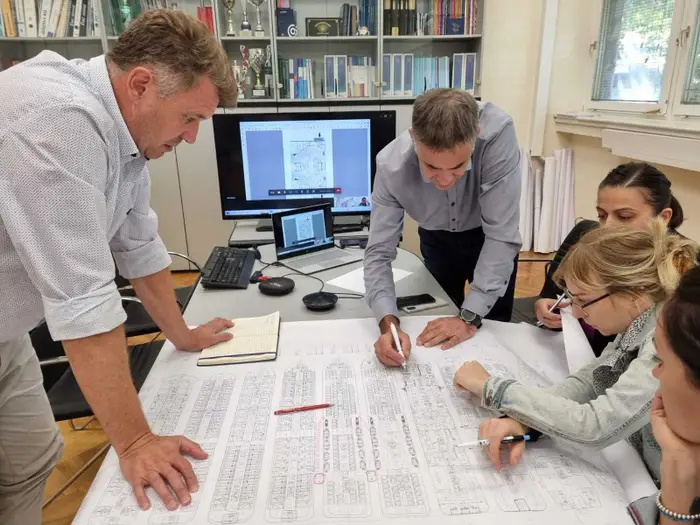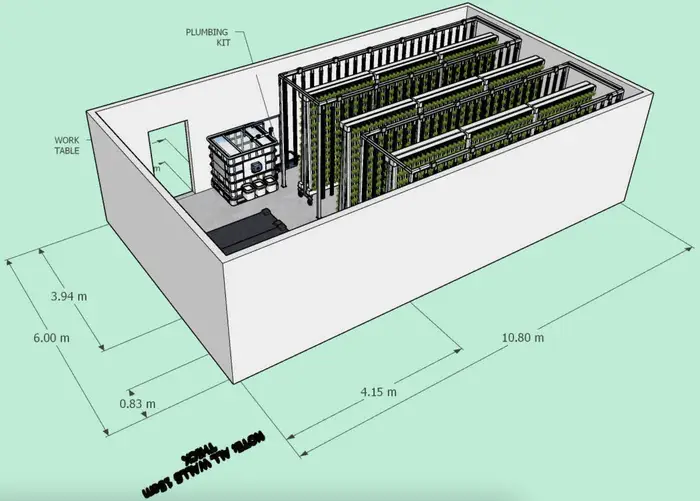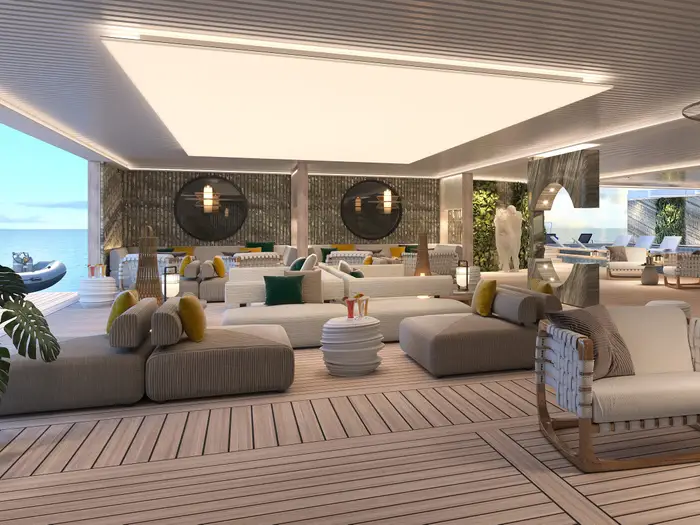Source.
Business Insider.
The $900 million Storylines MV Narrative cruise ship will have an anti-aging clinic, 2 farms, and a hospital – everything residents need to live permanently at sea.
This as-told-to essay is based on a conversation with Paul Read, the project manager for Storylines’ MV Narrative cruise ship and the CEO of the marine consultancy Gelen Marine. It has been edited for length and clarity.
I’ve spent 25 years working in the shipbuilding industry, but I’ve never been involved in a project like this.
About three years ago, I was appointed as project manager of Storylines’ MV Narrative, a cruise ship with apartments costing up to $8 million each, that will allow residents to live permanently at sea. Overall, the 18-deck vessel is expected to cost about $900 million to build.
”
Paul Read, a project manager, is heading the design process for the $900 million MV Narrative ship.
”
My team and I are still in the initial-design stages, but we’re working hard to get it completed for 2025 when it’ll travel to ports around the world.
Every day is different and jam-packed, but I love it.
It’s my first time designing a residential-cruise ship. When designing a cargo ship, you don’t care about how it looks inside, whereas the interior of a residential ship is the main focus because it’s someone’s home.
Residents’ unusual requests
Considering they’re spending at least $875,000 on an apartment, you’d expect residents to have extravagant requests for facilities. But most requests are mundane, while others are slightly unusual.
I got this requirement that we must have a pickleball court on board. I said to myself, ‘What’s pickleball?’ Now I’m designing one. A lot of residents play the sport and they’ve got together as a community.
”
The residential ship will let people live permanently at sea in apartments costing up to $8 million.
”
Others said they would only purchase an apartment if their pet could come with them. I initially thought, “No way.”
But after contacting the Centers for Disease Control and Prevention, it turns out there’s no issue with pets on board. So, we’re allowing residents to bring cats, and dogs but only up to a certain size because we don’t want to have massive pets taking over the ship. From what I’ve seen so far, most of the residents will bring two dogs with them.
Now, I’m overseeing design plans for a vet, a pet-grooming center, a pet daycare, and kennels.
Designing the hospital is tricky
Residents need to have access to medical facilities, so we’re creating designs for a dentist, a pharmacy, and a hospital with a CT scanner — something that I think has never been installed on a cruise ship before. The hospital is tricky to design because of the machinery inside, but I’m getting advice from consultants on how to lay out the room.
The MV Narrative will have an anti-aging clinic. I’m adding research labs to it, where qualified professionals will be able to research natural medicines.
I’m looking at creating recreational spaces, including an art studio, offices, and recording studios for bands, which I’ve also never seen on a cruise ship. I’ll also make room for a wellness center, which will include a gym, a spa, a yoga studio, and a pool.
There’ll be farms for food that residents can eat
Another exciting feature I’m designing are two vertical farms. It’s a clever system where plants grow in stacked layers and only water is required for the vegetation to grow. The ones on the MV Narrative are expected to grow lettuce, beans, tomatoes, cucumbers, and strawberries.
”
The features he’s designing include a pickleball court, vertical farms, and an anti-aging clinic.
”
These ingredients will be used in meals on board. So, for example, when residents order salads, most of it is expected to come from the vertical farms.
Unglamorous work
Below deck, I have to think about where sewage will be stored on the ship and how to get rid of residents’ water waste and trash in a sustainable way. It’s not the most pleasant feature to design, but it’s crucial because the residents and crew will be permanently living on the ocean.
On a day-to-day basis, I work closely with Alister Punton, the CEO of Storylines, meet with suppliers, and coordinate the designers for the interior, catering, lighting, and signage — we have designers for everything.
I also liaise with the shipyard in Split, a city in Croatia, where workers will construct the ship. That’s where I’ve spent most of my time in the past four months, sitting down with the shipbuilding and design teams to solve any problems. I expect I’ll be based in Split until the construction work starts.
At the end of the day, a ship is a ship. They’re all made of steel and have the same machinery. It just depends on what’s inside it — people or cargo.








